The best Dota 2 custom games
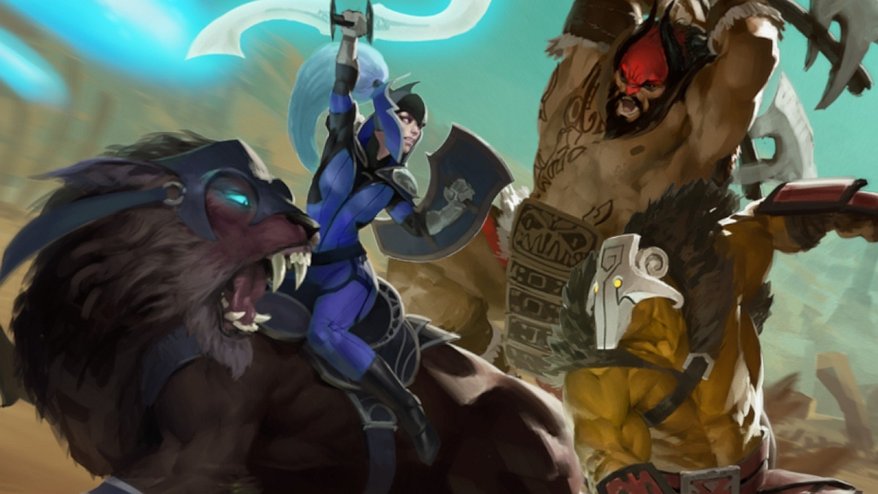
Custom games arrived in Dota 2 as part of last September’s Reborn update, turning Valve’s world-conquering wizard ‘em up into a platform for experimental community multiplayer game development (and loads of tower defense games.) Many of them are ideal for those moments when you don’t have time for real Dota but you want to play something with your friends—or for those awkward scenarios when you’ve got six people wanting to play a five-person game. Even so, it can be hard to sort out the killer wheat from the naff chaff. Fear not! We’ve done it for you.
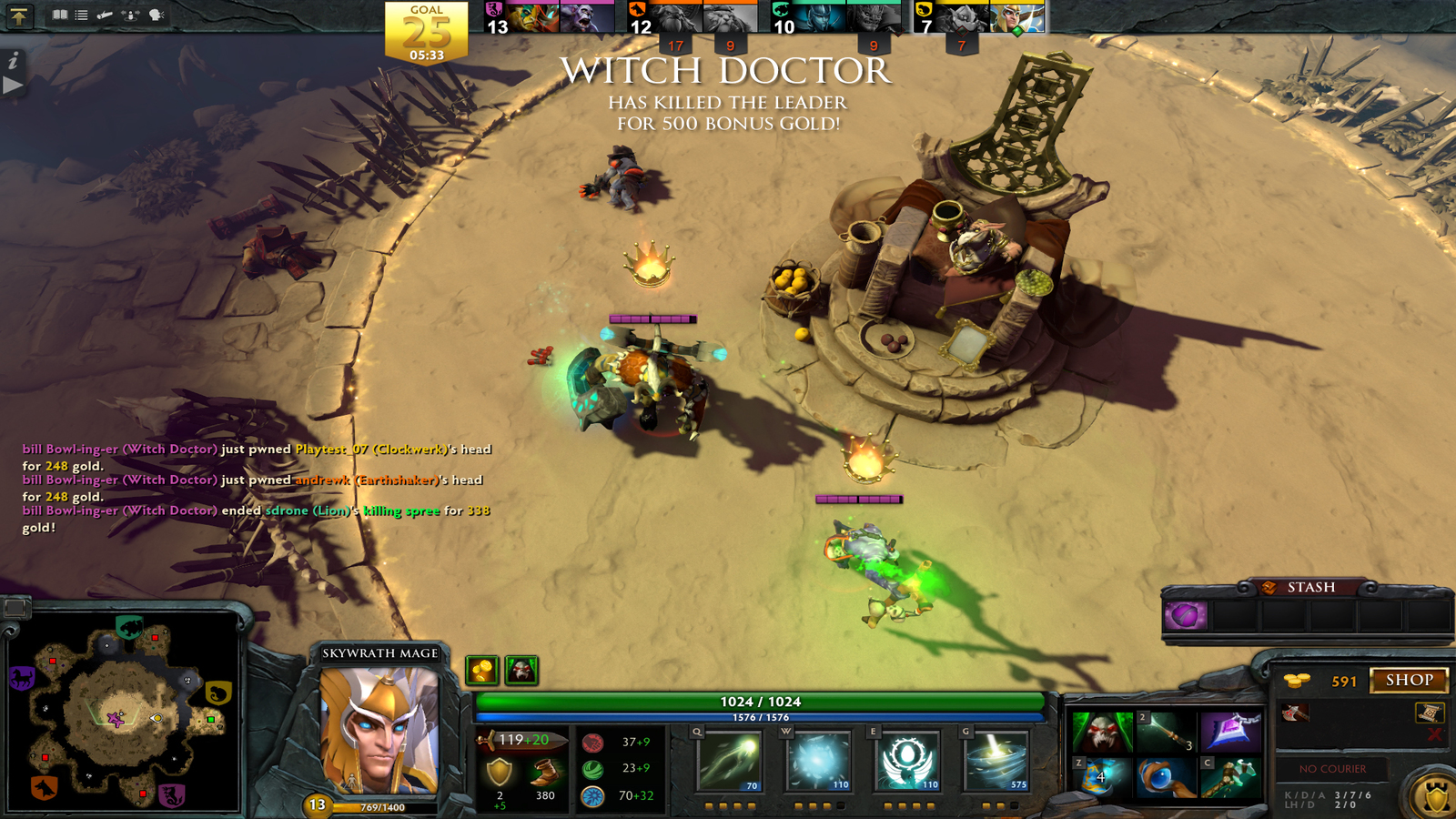
Overthrow
We’ll kick off with one of Valve’s own offerings. In the early days of Reborn, Overthrow served as the flagship for custom games. To a large extent it still does, with regular updates helping it to hold its place at the top of the most popular modes. It’s essentially Teamfighting: The Game, with players split over multiple teams competing to reach a certain number of kills first. The action is focussed around a central throne, which gives extra experience to anyone near it and occasionally spews out bonus gold.
All of the heroes and items are unaltered from normal Dota (aside from the occasional balance tweak), making Overthrow a great gateway into the world of custom games. As with most of the modes on this list, though, you’ll want to jump in with friends: playing with someone who feeds away ten kills then disconnects is just as gutting as it is in the main game. Alternatively, play Overthrow like I do and it becomes Kill Stealing: The Game. Pick a hero with a nuke at the start and sneak around the map, letting other teams do the hard work before sniping anyone whose health gets low enough. It’s all the fun of stealing from actual teammates without having to put up with the (usually justified) grumbling.

Colosseum
Colosseum is Valve’s second custom game, again featuring all the same heroes and items from Dota proper. It’s a 5v5 capture point mode, played in one of three arenas littered with traps of varying lethality. Holding the majority of the points makes your team’s victory counter tick up: the more points you hold, the faster it goes.
The traps make the game, allowing a disadvantaged team to turn the tides on careless attackers. If you think juking around trees in normal dota is fun, wait until you try it with spike pits instead. You can expect to see Dark Seer grabbed in the first few seconds of picking: a well timed vacuum can pack five heroes into the path of a swinging saw, turning the spell into a one click rampage button. The best kind of button.
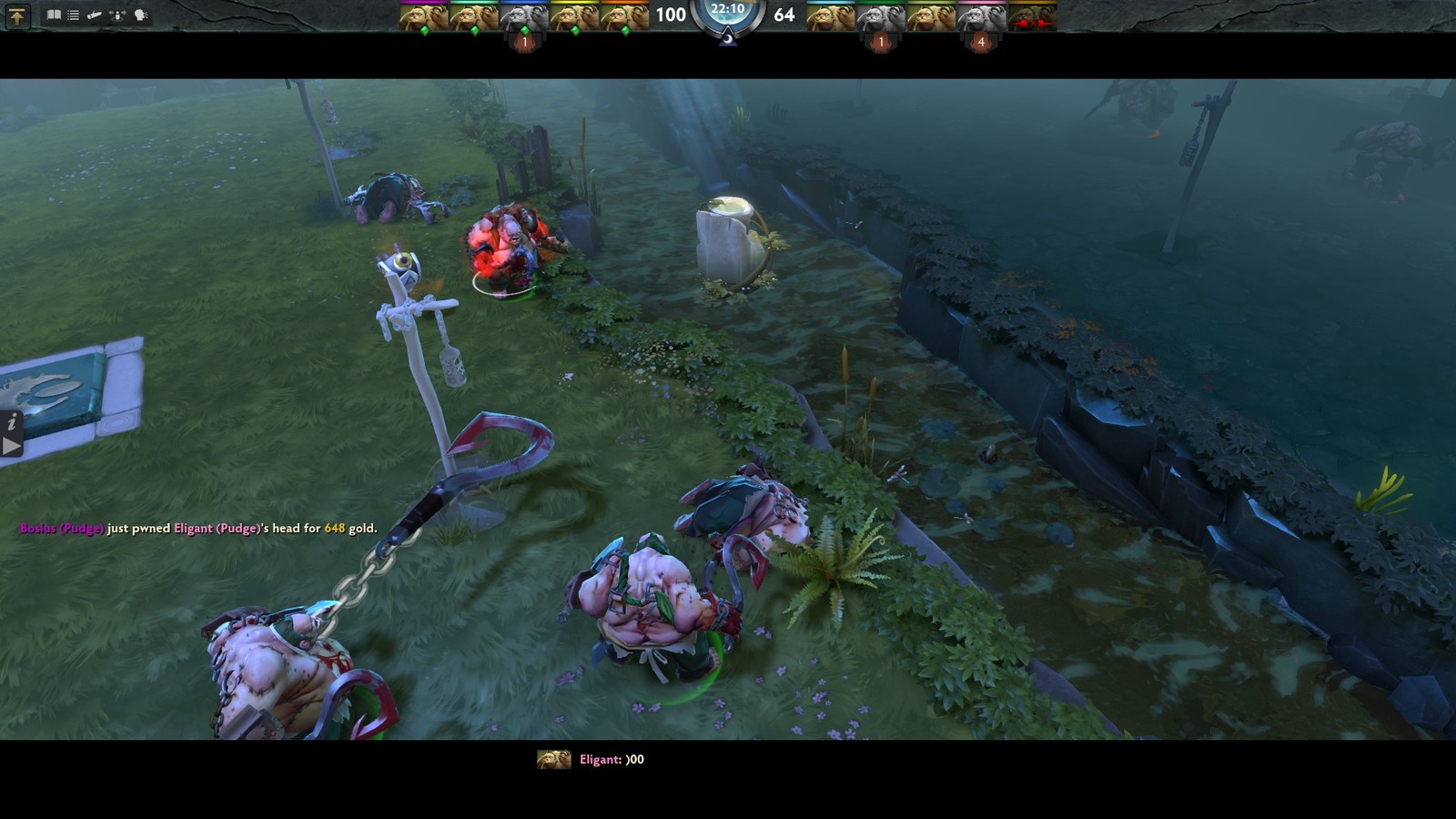
Pudge Wars
Hailing from the days of DotA 1, Pudge Wars is seen as a classic—and deservedly so. Five Pudges spawn either side of an uncrossable river, each armed with a jazzed up version of Pudge’s meat hook from the main game. First team to either 50, 100 or 150 kills wins, depending on what’s voted for at the start.
If that sounds overly simple, don’t worry: the hook can be upgraded in different ways as you level up, and there are a dozen or so items that can change your playstyle. I’m a fan of going for Barathrum's lantern, which increases hook damage based on its speed, and focussing on picking off low enemy Pudges from across the divide. That, or picking up Techies’ explosive barrel and exploding anyone foolish enough to hook me within range.
Managing to hook someone who’s already being hooked results in an instakill and the Quake announcer man bellowing HEADSHOT, though without a friend to coordinate with that tends to happen based on luck more often than skill. Or, y’know, maybe other people are just better at Pudge Wars than I am—the jury’s out.
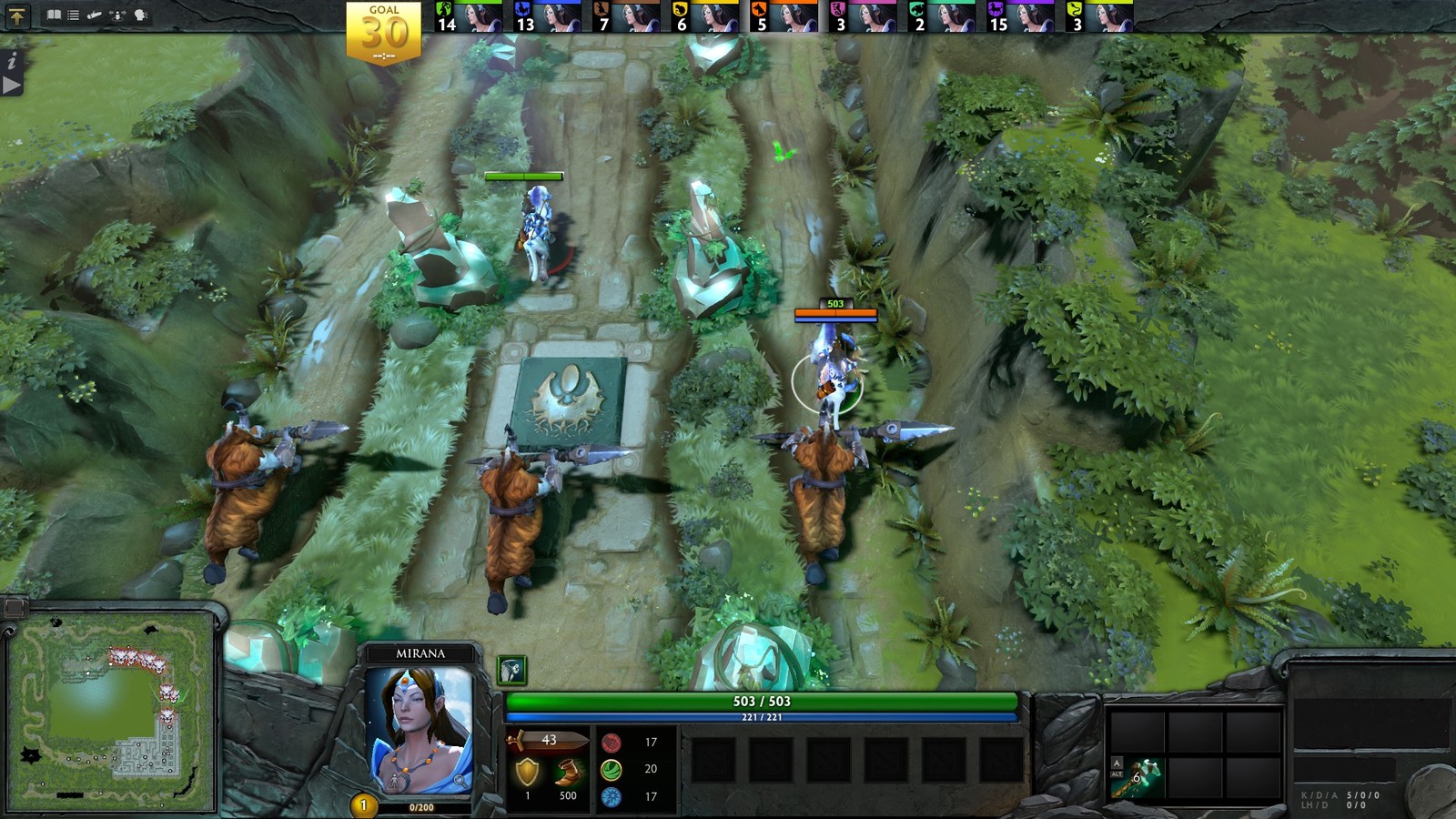
Dota Run
Another oldie (but a goodie), Dota Run turns Dota into Mario Kart as up to 10 Miranas race around an obstacle-laden course, firing off powerups and generally screwing each other over. It’s great, silly fun, but with a layer of tactical depth that sustains it from match to match, each of which lasts about half an hour. You’ll run the course three or four times over that period, with the game ending when one person finishes close enough to the front enough times to reach 30 points.
The course itself is the real star of the show, featuring Pudge hooks to dodge, minefields to cross, a mini maze crawling with centaur creeps to navigate and an infuriating stretch of wall-laying Earthshakers to rage-quit over. Each player starts with a Force Staff to help with the stickiest obstacles, though it’s on a long cooldown and is often better saved to avoid the antics of other players. As you’ll find out, there’s nothing worse than being helplessly netherswapped into the path of a charging Magnus.
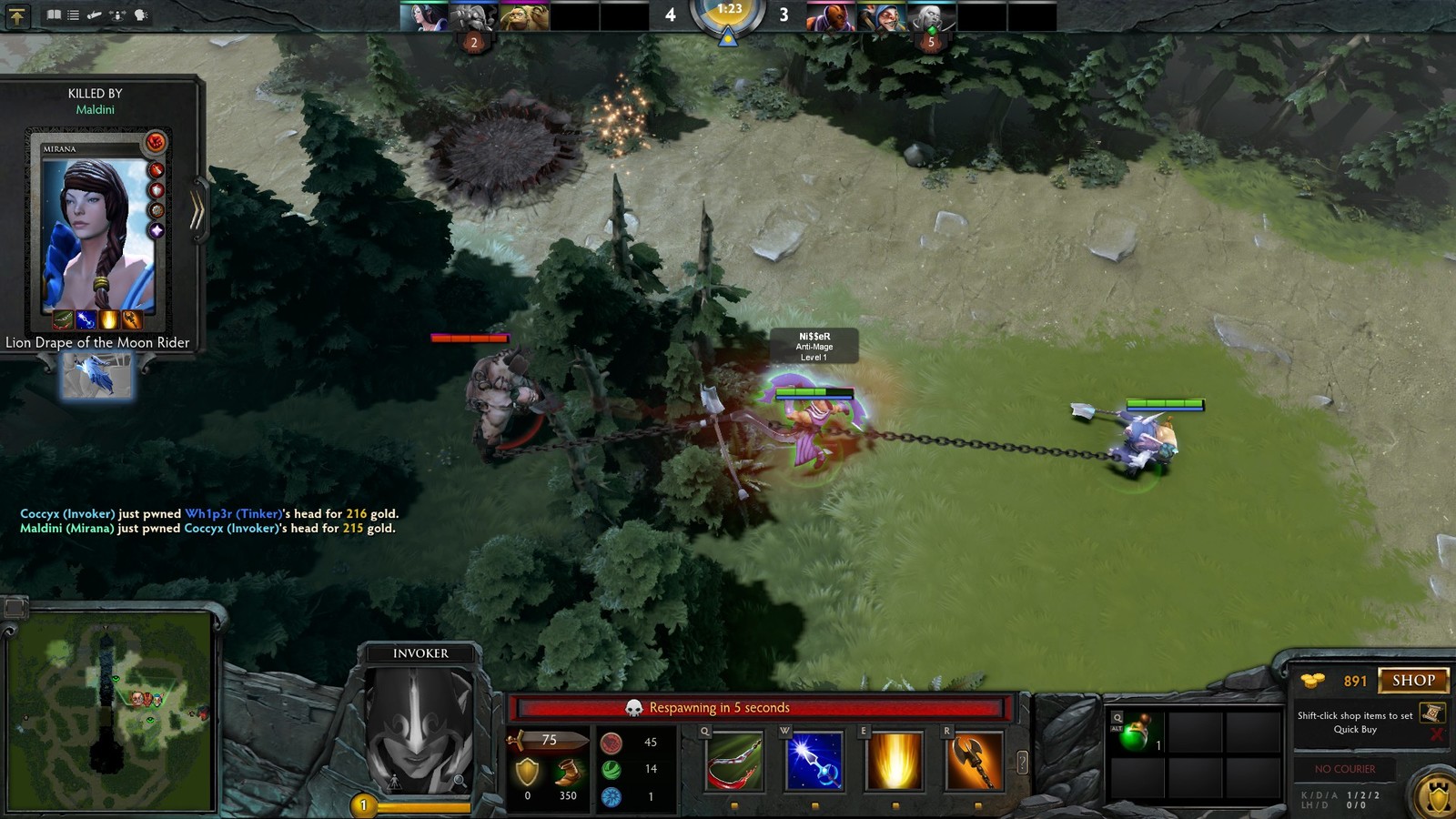
Skillshot Wars
Skillshot Wars has been around since before the launch of Reborn, which isn’t surprising: it’s the first custom game mode I’d think to make. Take four of the most popular skillshots from the main game, buff them and remove all mana costs, then set players against each other in teams of five. First team to 40 kills wins.
While chaining abilities together as a solo player works to an extent, this is a custom game where teamwork is well and truly OP. Landing a Mirana arrow allows for a guaranteed Sunstrike hit from anywhere on the map; communicating with your team makes that five sunstrikes and a guaranteed kill. Unless, that is, he’s got a friend on hand to hook him to safety. Unless, that is, you anticipated that his friend would save him and called down your sunstrikes in the place you knew where he was going to be… unless they never get moved in the first place. It’s a shame that saving the lives of potentially kill-stealing teammates is an entirely alien concept to most pub players: roll up with some people you know and show them the power of friendship.
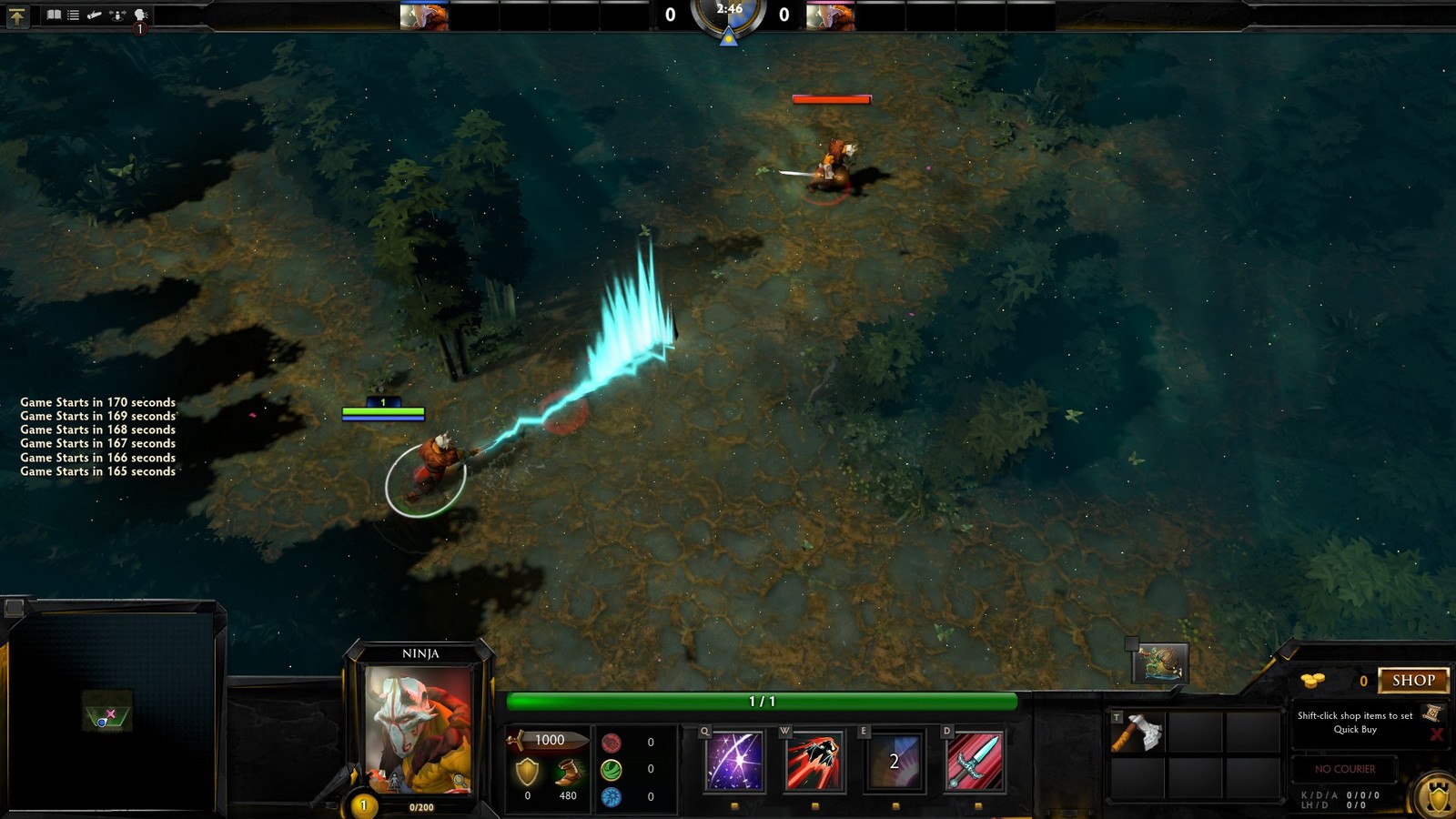
Hardcore Ninja
There isn’t enough space here for me to tell you how much fun Hardcore Ninja can be. It’s a team deathmatch mode where every player is a ninja-fied version of Juggernaut, each equipped with an array of insta-kill abilities. This is where Dota meets Counter-Strike: rounds are short, intense, and largely decided by speedy reflexes.
Nevertheless, a smart player can still beat a more nimble foe. Playing well in Hardcore Ninja is as much about mind games as it is about pressing buttons quickly, especially on the map which has plenty of trees to juke around. There’s something quintessentially ninja-y about lurking in the fog of war, pouncing on group of players before blinking back into the shadows.
The mode’s recently been updated with a new item and a new map. There’s now an orb that refreshes all cooldowns once per round and an arena with fewer trees. Hot tip time: don’t save the orb until after you’re dead, and play on the original map.
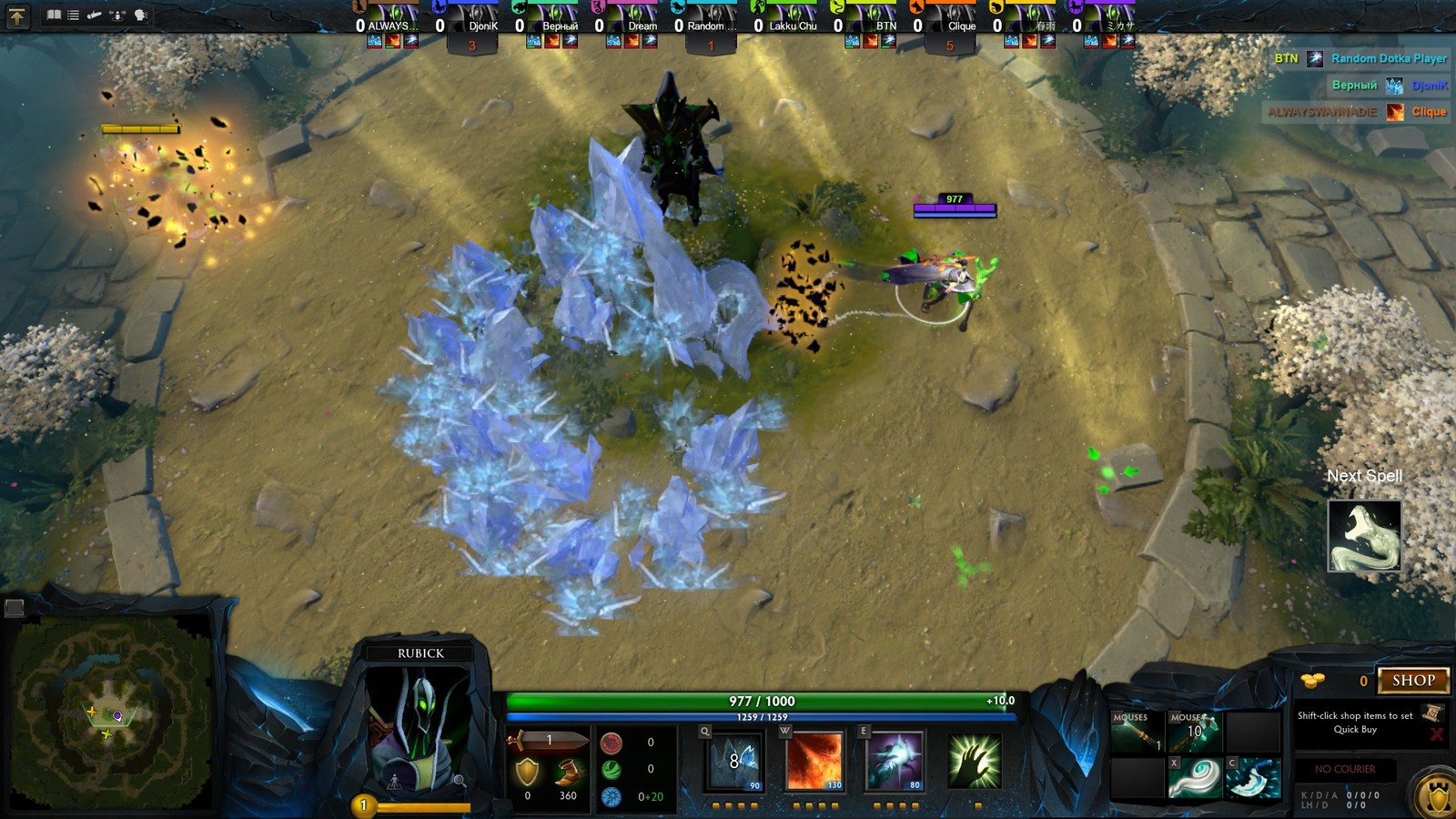
Grand Magus
Another custom game for when you’re fed up with being part of a team, Grand Magus sets up to 10 Rubicks against each other in free for all deathmatch. The four spells that each player has access to change during the game depending on what conditions people have voted for at the start, with spells changing on each kill being by far the most popular way to play.
It’s Counter-Strike’s gun game by way of wizards, and it’s excellent. You’re forced to swap up strategies on the fly, adapting to your changing abilities while trying to stay alive. It’s a set up that rewards playing with an encyclopedic knowledge of Dota’s spells, creating a sense of mastery that taps into that fantasy we all have about being an actual proper wizard. Come on, you know the one.
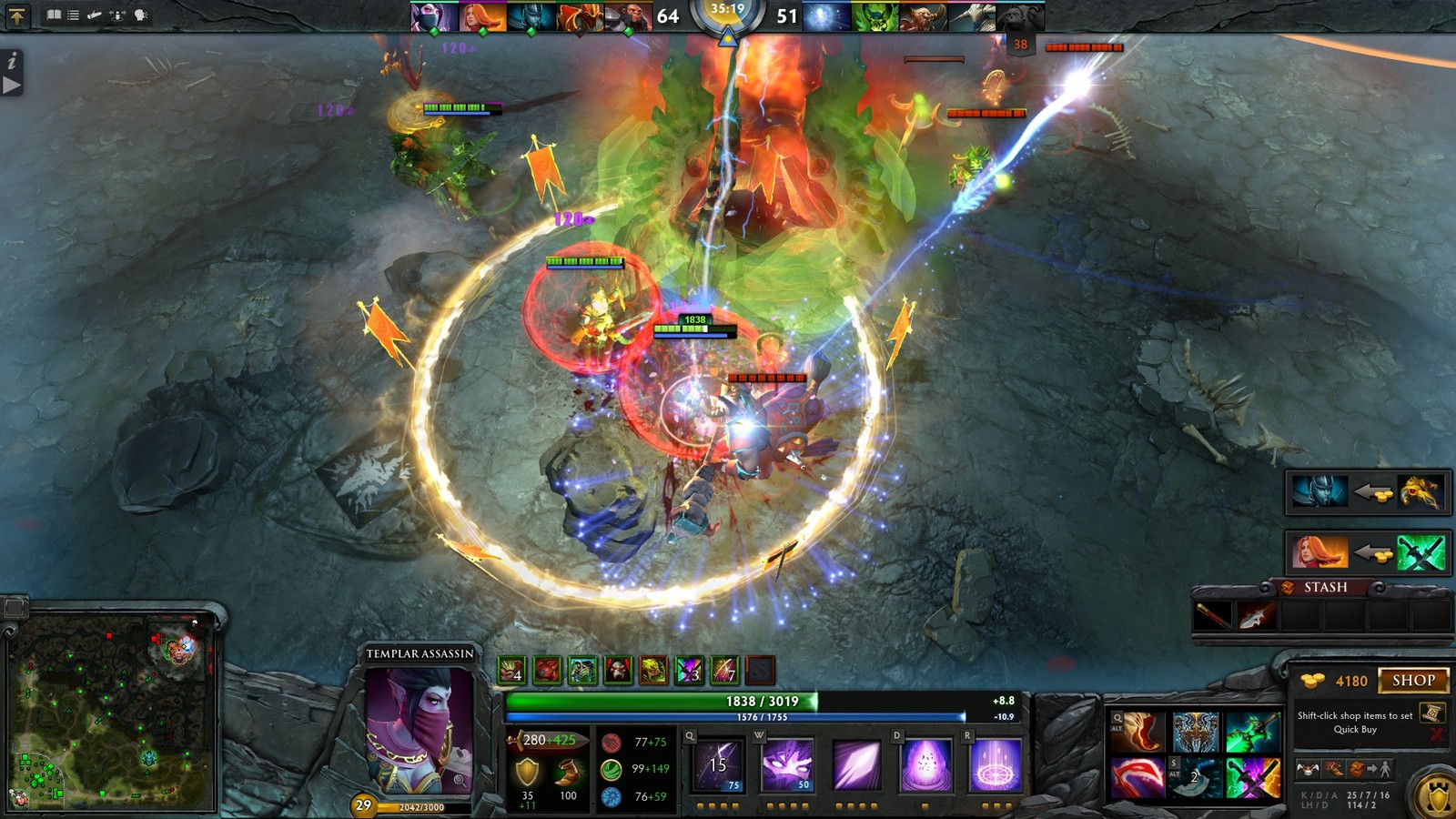
Dota IMBA
IMBA’s own description sells itself better than I can—‘Dota IMBA is the answer to the question: what would happen if every hero received nothing but buffs for 100 patches straight?’ It’s a good question, and IMBA answers it well. The game comes in two main flavours, a 10v10 mode and a more conventional 5v5 one. You can also choose to ignore the usual Ancient guarding business and play to a number of kills instead.
It’s like Dota but more so. Every aspect of the game is exaggerated: heroes gets way more powerful way more quickly. Items are cheaper, gold and xp come faster and in greater amounts. The philosophy behind IMBA turns Dota into a playground again, packed with arcane nonsense of the ‘you’re just going to have to accept this and move on’ variety. It’s built on the bedrock of the same old Dota that you’re familiar with, allowing it to capture the thrill of constant discovery while avoiding being totally overwhelming.
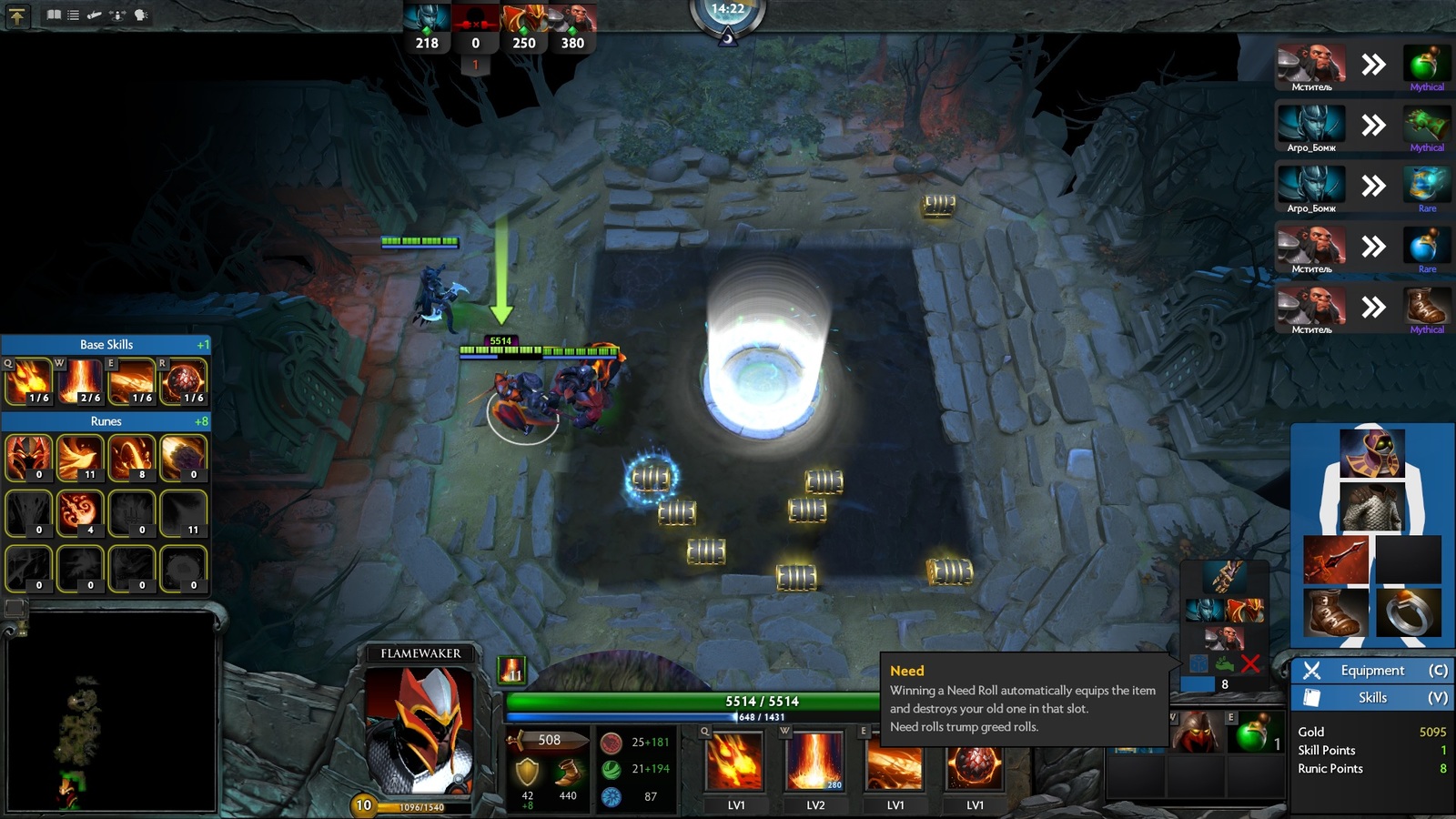
Roshpit Champions 2.0
In terms of pure scope, Roshpit Champions has been one of the most extensive and impressive custom games made in Dota 2 since the launch of Reborn. It bills itself as ‘team survival’, pitting teams of four players against dungeons of AI mobs. It’s a fully fledged RPG, boasting 12 classes, hundreds of items, branching skill trees and customisable weapons. It’s even split up into three themed acts, a la Diablo.
Before Roshpit Champions 2.0, the finale had to be reached in a single session, with a team wipe sending you all the way back to the beginning. The introduction of an Oracle in town changes all that, allowing characters and items to be saved across game sessions. It’s a remarkable feat: I haven’t come across another custom game with persistent saves. The new system allows for two new difficulty levels for high level characters, arguably turning Roshpit Champions into the most content-rich game in the arcade.
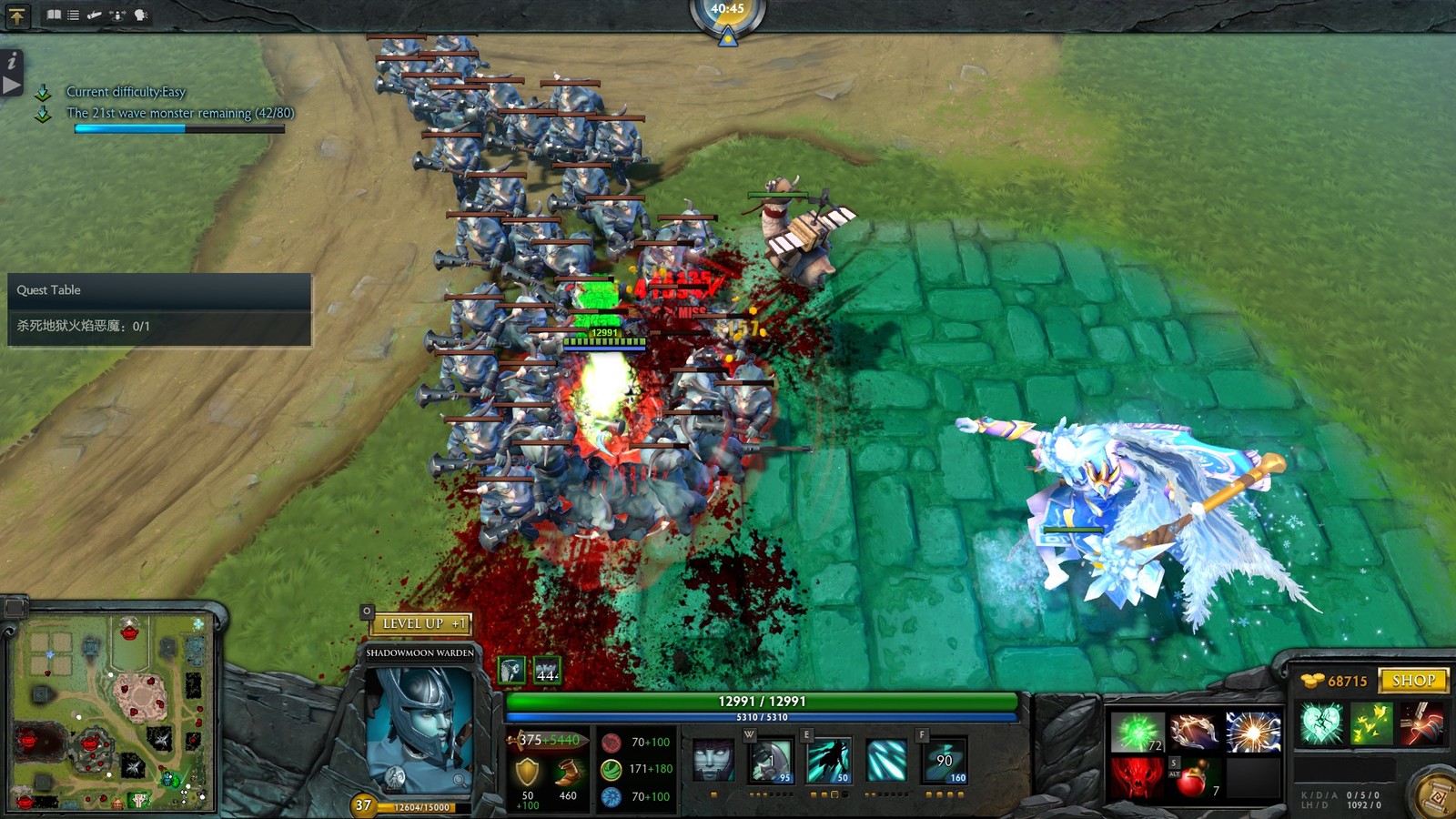
Guarding Athena
Remember Wraith Night? Guarding Athena does. It’s a four player wave survival game in a similar vein, with each of you working together to hold off hordes of enemy creeps. That’s just the tip of the iceberg. Between waves you’ll be roaming around the map, picking up quests and defeating boss minions that give access to the most powerful items.
This means that there’s essentially zero downtime, which can be tough to deal with considering the overwhelming amount of information the game throws at you. This is compounded by the fact that all of the descriptions are translated from Chinese, with varying levels of success. Strangely, I think it actually adds to the game: working out what does what and how to progress is all part of the fun. A word of warning: if ever there was a custom game to play with friends, this is it. A full game can take hours, and you really don’t want any drop outs after that much investment. With a full team of four, however, Guarding Athena is a mystery well worth unraveling.

